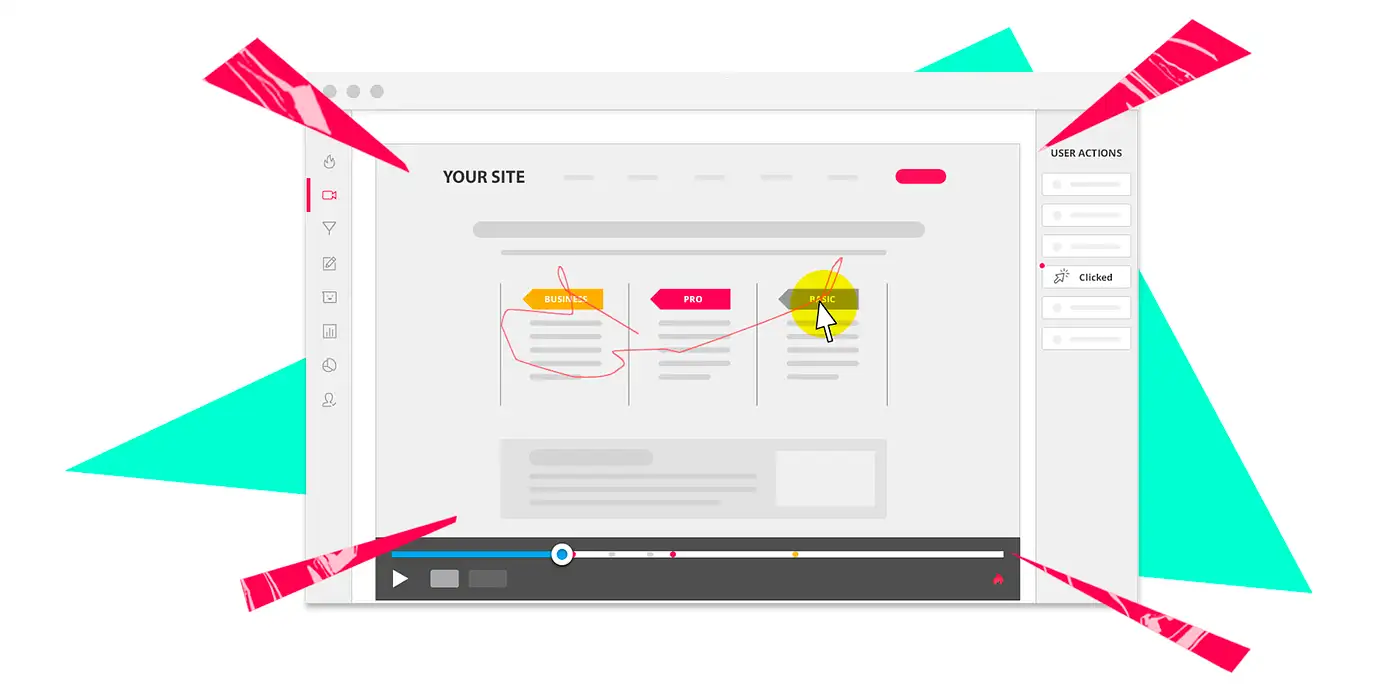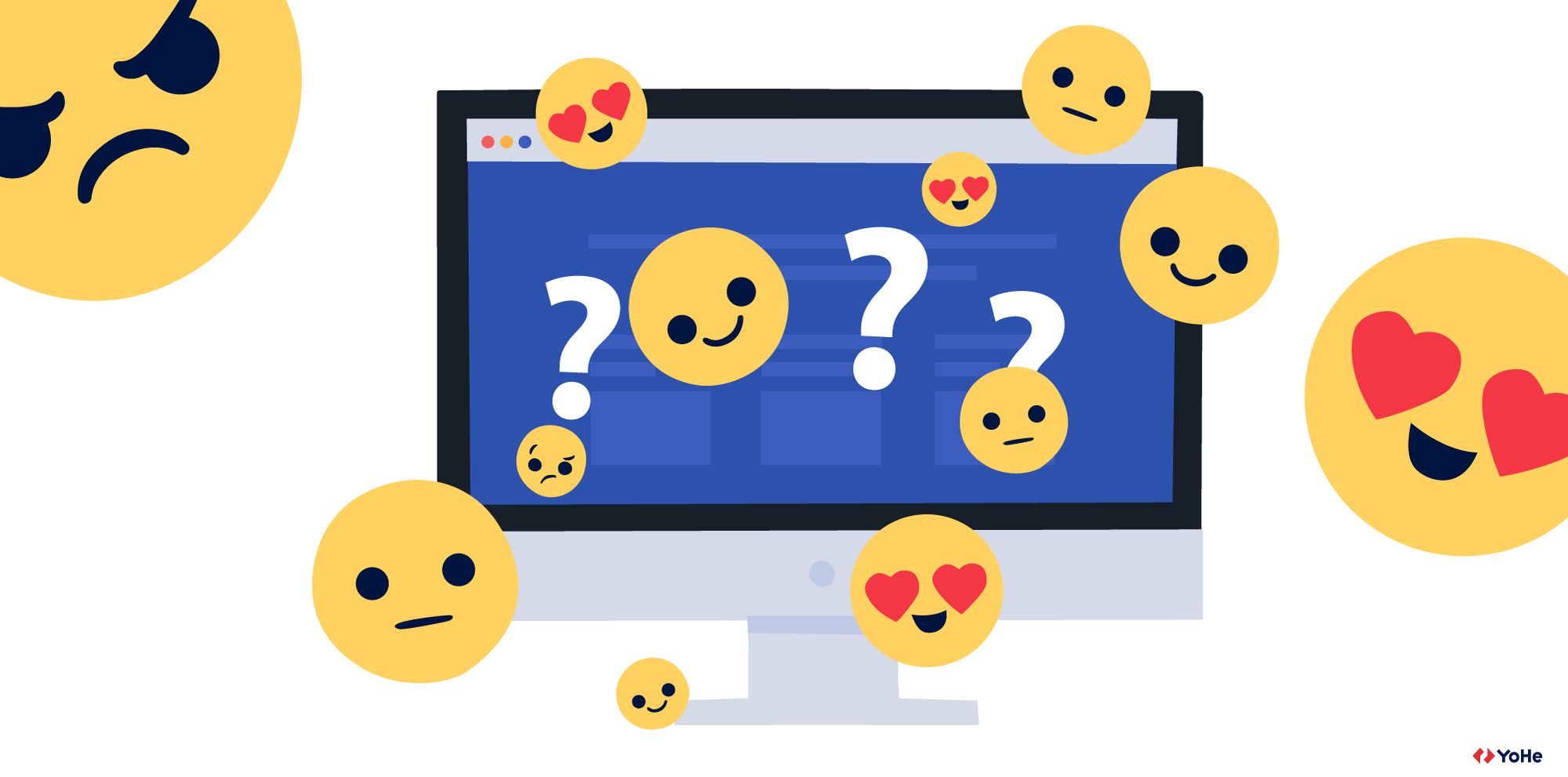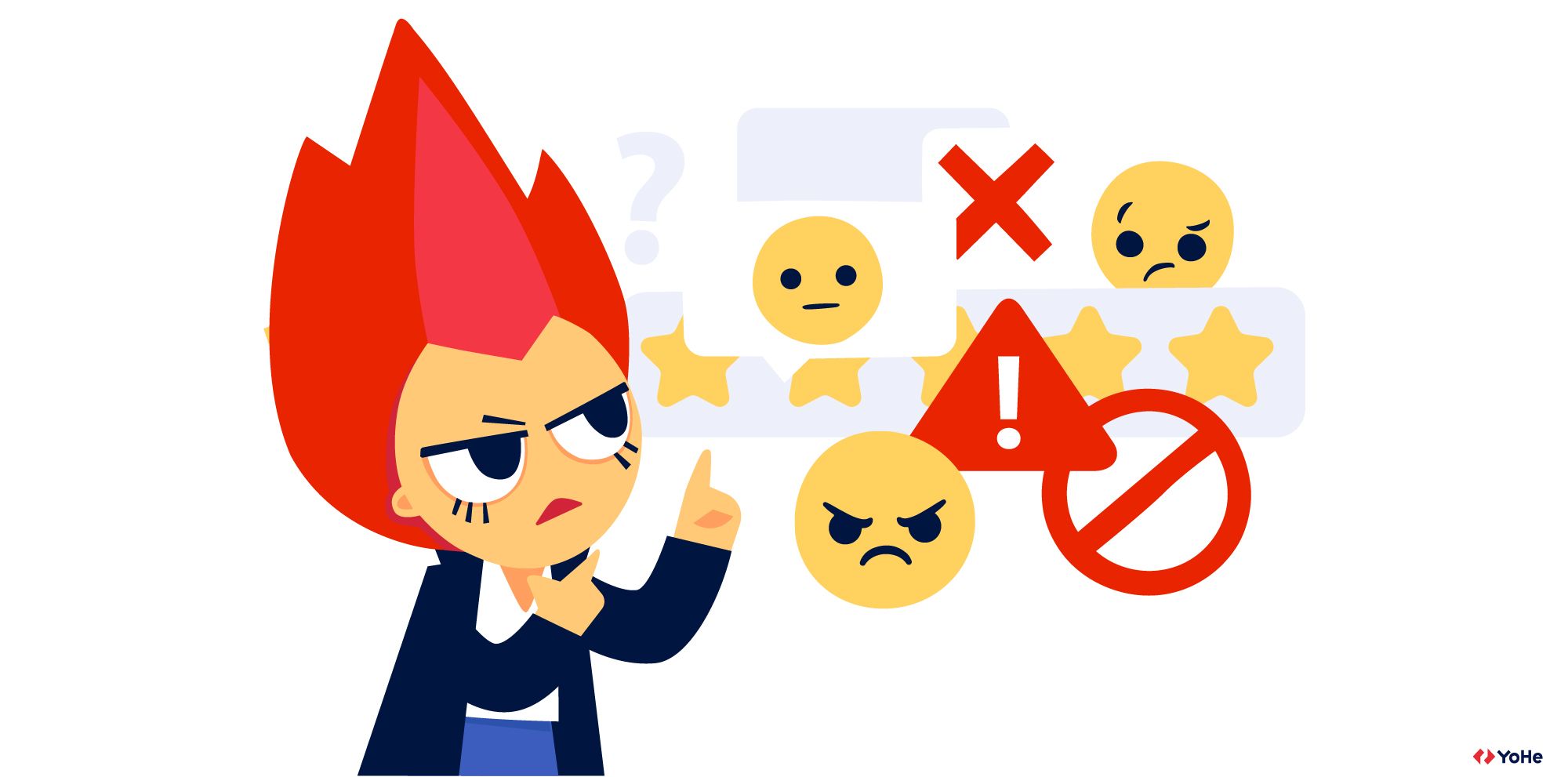In this article, we will talk about the Voice of the Customer. Let's find out how users can improve your product and what you should do to make it work.
Our world consists of needs and expectations. Imagine the disappointment you experience when you go to the restaurant, and the waiter brings you the wrong dish.
Or you buy a new smartphone, and it doesn't match the specifications. What would your general impression be about the restaurant or the electronics manufacturer?
Digital products are evaluated by users, according to the same principles. They haven’t received an SMS authentication code? Does the app keep crashing during the checkout process? All these are unjustified expectations. And the reason why a particular user may never come back to you again.
At the end of the XX century, companies around the globe realized that marketing competition had reached a point when the price/quality was not already enough for customers to decide on the purchase. Customer Experience started to play a significant role. And to improve CX, you need to meet customer expectations, which means ... you need to listen to your clients! They are most interested in your product striving for the ideal.
With this new understanding, the Voice of the Customer was born.
What is the Voice of the Customer?
Voice of the Customer is a method of researching the expectations and needs of users. Companies use it to understand customers' needs for products and services. This process covers everything that users say and write about the businesses. It also helps to bridge the gap between expectations and the experience of interacting with the company.
Let's look at an example. Users encounter your product every day, and this process must be convenient. Customers can talk and write about any problems and wants anywhere: on the website, in social media, in the feedback form, in offline offices – wherever the slightest contact with the company is possible.
What can they tell you? Almost everything! From general reviews about the whole business, for example: "Terrible service in the store, the cashier was rude to me," "The courier did not warn that he would not come." To detailed ones: "The menu does not work in the mobile version," "I didn't get SMS with password" – all these are parts of the Voice of the Customer.
You can also collect specific feedback. Just formulate the question correctly and ask it at the right time. We'll talk about this a little later in the article.
In general, people often underestimate the power of feedback. But, thanks to VoC, we can get the insight – those super-useful facts or comments about the product, which then help to improve it. Bugs, bad UX, the need for certain features – all this can be missed by the team. In this case, the product risks being disconnected from reality. There are other types of research, but it will take a lot of time and effort to find respondents and work with them.
That is why VoC has gained such popularity. This method is one of the fastest for identifying barriers that prevent customers from using your product or service. And most importantly, it answers the question: "Why?"
Why "listen" to the Voice?
Why listen to users and their voices at all? Top companies one day began to realize that they lost some money because of external circumstances. For example, when the user wants to use a non-working feature.
What's more, profit can become "harmful" when the client seems to have used your services and even paid money for it, but he did not like the result. This effect further overlaps your profit.
The company's reputation tends to go down, the number of angry comments on social media is growing exponentially. New haters may even dissuade friends from buying from you.
That's why it's so important to collect feedback! If you don't listen to customers' needs, it will have a very negative impact in the future. It is the basement of the Voice of the Customer – to use its capabilities to increase loyalty and trust. And to save users from suffering and your products from losses.
Along with this, the desired financial figures will come to you. According to the latest research by the Aberdeen Group, the revenues of the largest companies using VoC, on average, increase every year by ten times compared to the competitors' revenues. In addition, the marketing costs for a loyal customer attraction are several times less than for searching for new ones.
"So let's collect feedback as soon as possible!" – you will say. "It's not that simple" – we'll slow you down a little. Most people believe that collecting feedback will immediately solve all their problems. It's the first mistake in using VoC.
The Voice of the Customer is not a magic pill, and it will not force users to leave reviews if you approach the work carelessly. Let's figure it out! The whole process is divided into four stages: data collection, processing, research, and decision making.
In this article, we will analyze these stages using the example of websites and mobile applications. But in general, the Voice of the Customer is much broader.
Data collection
The main principle of the Voice of the Customer: you need to ask the right questions at the right time. To formulate the right question, you have to avoid many pitfalls. Questions should be as coherent as possible, formulated in the user's language. They shouldn't lead respondents to the "correct" answer that you need.
The "right time" is certain sections of the user path. For example, in the shopping cart, you can show a survey to a person who is "stuck" on that stage and spent significantly more than the average time on the page for your site. Find out if they have any difficulties with the design – there is a chance they will write about some unknown critical bugs.
You can determine the "right time" using the CJM. If you have already created it, it is not difficult to understand in which areas you can ask users a question.

As a rule, there are problems in almost every section, e.g. a transaction is declined, the search does not work well, the comparison tool is inconvenient. Note that CJM is also used for offline research.
Processing
Collecting data from users is just a minor part of the VoC. The next task is to process all the received data. At this stage, you will need to know two main terms of the Voice of the Customer: customer's wants and needs.
Your main task is to understand the difference between them and learn how to transform wants into needs. Let's figure it out.
For example, you receive feedback from a user asking you to change the color of the registration button from blue to red. Dig deeper: it means it's challenging for site visitors to find this particular button. The want is the color change, the need is the quick finding of the certain functionality.
Another example is a website redesign. It's a headache and hell, but it's possible to amortize user dissatisfaction as much as possible.
Here is an example from the case of a site that suddenly decided to make a major redesign. For many years, loyal readers have been communicating and posting articles. After the redesign, users began to write with dissatisfaction: "I can't use the feed now, it became inconvenient to choose a post in it, bring everything back!", "Now I need 3-4 times more time to study the news feed."
One of the main user's wants during any redesign is to bring everything back because it was better before. But in this case, it is much more crucial for you to understand the need.
As a result of communication with users, it became clear that posts in the feed became much harder to grasp at one glance. The Z-pattern familiar to users has turned into an inconvenient track.
After the improvements, the hate began to fade away, and users loved the new design. That's why it's so important to learn how to turn wants into needs.
In our practice, there was a case when a client asked that any click on the emoji in UX Feedback surveys would be instantly sent to the statistics.
But there was a trap – users often can't immediately decide which number or emoji to pick, so they click on several in turn before sending feedback. If implemented, the want of our client would lead to distorted statistics.
The real need of the client was not the speed or amount of the statistics but the ability to get responses without comments. We made it possible and, as a result, the client was happy, and many other companies began to use the new feature.
Remember: the want is how the client sees the solution to his problem. Naturally, he ignores many factors that can affect the work of other people/companies. The wants may vary from person to person, but their needs will be the same.
Generally, it is not that difficult to learn how to convert wants into needs. You just need to practice. It will help you to organize feedback categories and process the responses. The data is collected in a single table and tagged according to the needs described by users.
Research
Feedback can be divided into three main categories: complaints, bugs, and problems. Complaints require an answer, and if you ask the right question, you will seldom get them. Bugs, with rare exceptions, are immediately sent to developers. And the problems are about more global changes. To solve those problems, you often need additional research.
For example, a user may write: "You have disgusting navigation!" This response is useless as it is. To understand what they meant, you will have to look at least at the recording of their session.

However, not all problems are solved so easily. For example, if passengers complain about an inconvenient aircraft seat map, you will have to assemble focus groups or conduct many of in-depth interviews to understand the reasons.
What should the work look like at this stage? Take a specific problem that users helped to identify at the feedback collection stage. For example, you need to deal with bugs related to the actual purchase. The primary pain you found is delivery. You will need specific responses about it. Then describe the scenarios in which users encounter a problem. Then analyze how many people have encountered it.
Next, study the behavior of these users. To do this, you can use UX Feedback integration with Google Analytics. Take a detailed look at the history of user experience.
Conduct surveys directly on the website or contact users for an interview. How to do it? Collect feedback along with contact details. Add a small text asking: "Please enter your e-mail address below, we will contact you and solve your problem as soon as possible." And then contact the user by mail and ask them to answer your questions.
In a short interview, they will talk about the obstacles they faced. And, by the way, such attention from the company often gives a significant positive effect. Customers like it when companies listen to their opinions.
As a result of the research, you will receive a document that clearly describes why this problem appeared and where its roots are.
Decision making
Now that you have learned how to collect feedback and transform wants into needs, there are very few actions left to make your product great again. Knowing why your users are experiencing problems, what they expect to see and how you can help, you can easily find solutions.
Perhaps some readers will have a question here: why do we need all these long and endless stages? Why do research at all, spend time and money on it? We answer: research will protect you from constant and unproductive alterations.
We often see a picture when teams make decisions based on the opinion: "It seems to me that…". It is the wrong approach, which leads to constant updates of the same functionality. One of our clients, a large e-commerce project, remodeled the order process six times in 3 months because it "seemed" to different specialists they knew better.
Research is based on the opinions and behavior of users who interact with your product every day. Therefore, they allow you to accurately answer the questions: "What's wrong?" and "Why?" So you can stop making predictions.
Conclusion
Let's now summarize the results of collecting VoC. Think about it – your users have done an enormous amount of work for free! They pointed out those "blind spots" in UX that you would have to look for and test for many months. With Voice of the Customer, you get excellent points for changes.
The main thing to learn is that from now on, a customer-centered approach should be at the center of your universe.
The Voice of the Customer will not become a lifesaver. But collecting feedback will help you get closer to understanding the preferences and problems of customers. And reinforce customer loyalty.
And now we are one step closer to the main goal – users' endless love. It will also lead to KPI improvement and increased profits.





